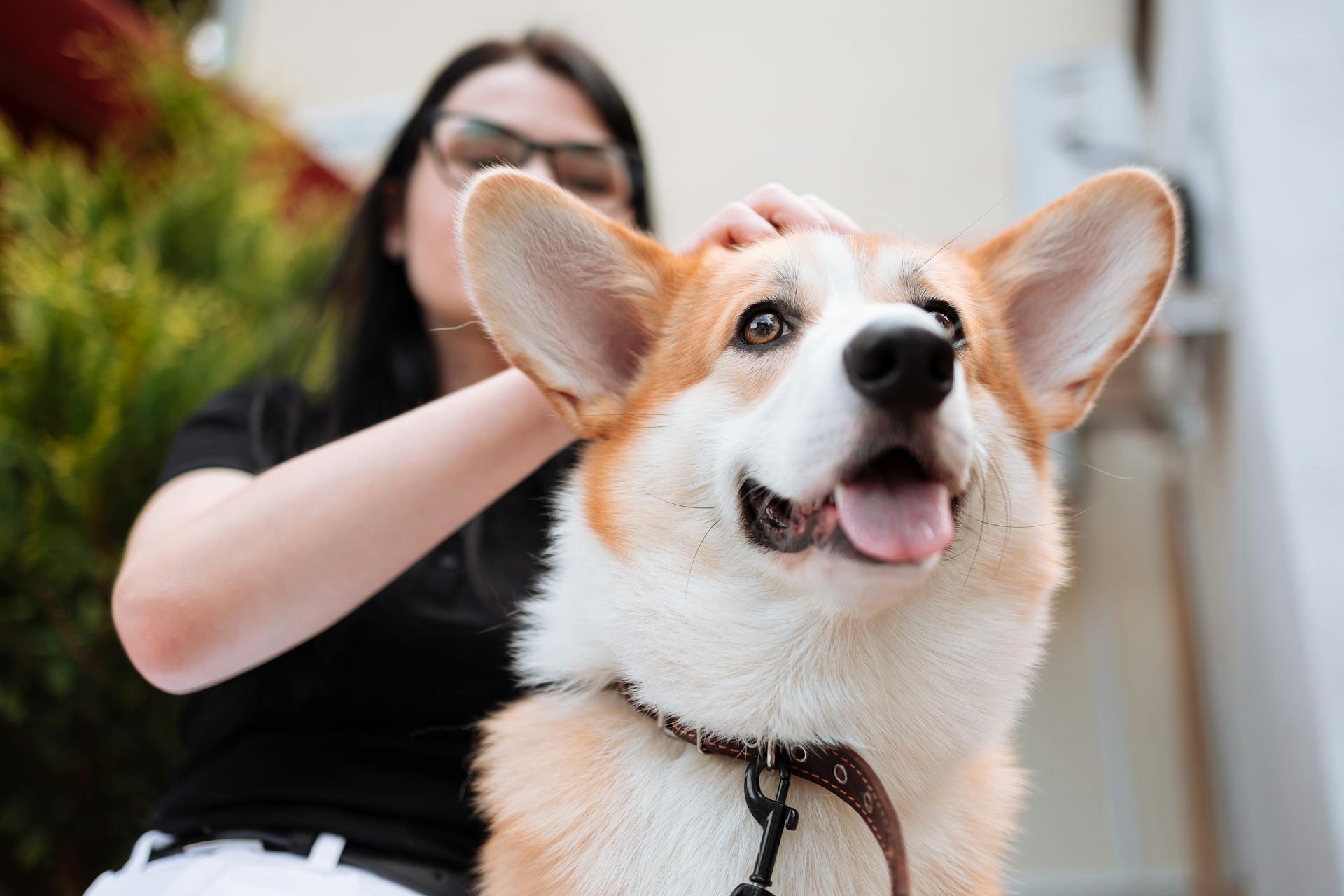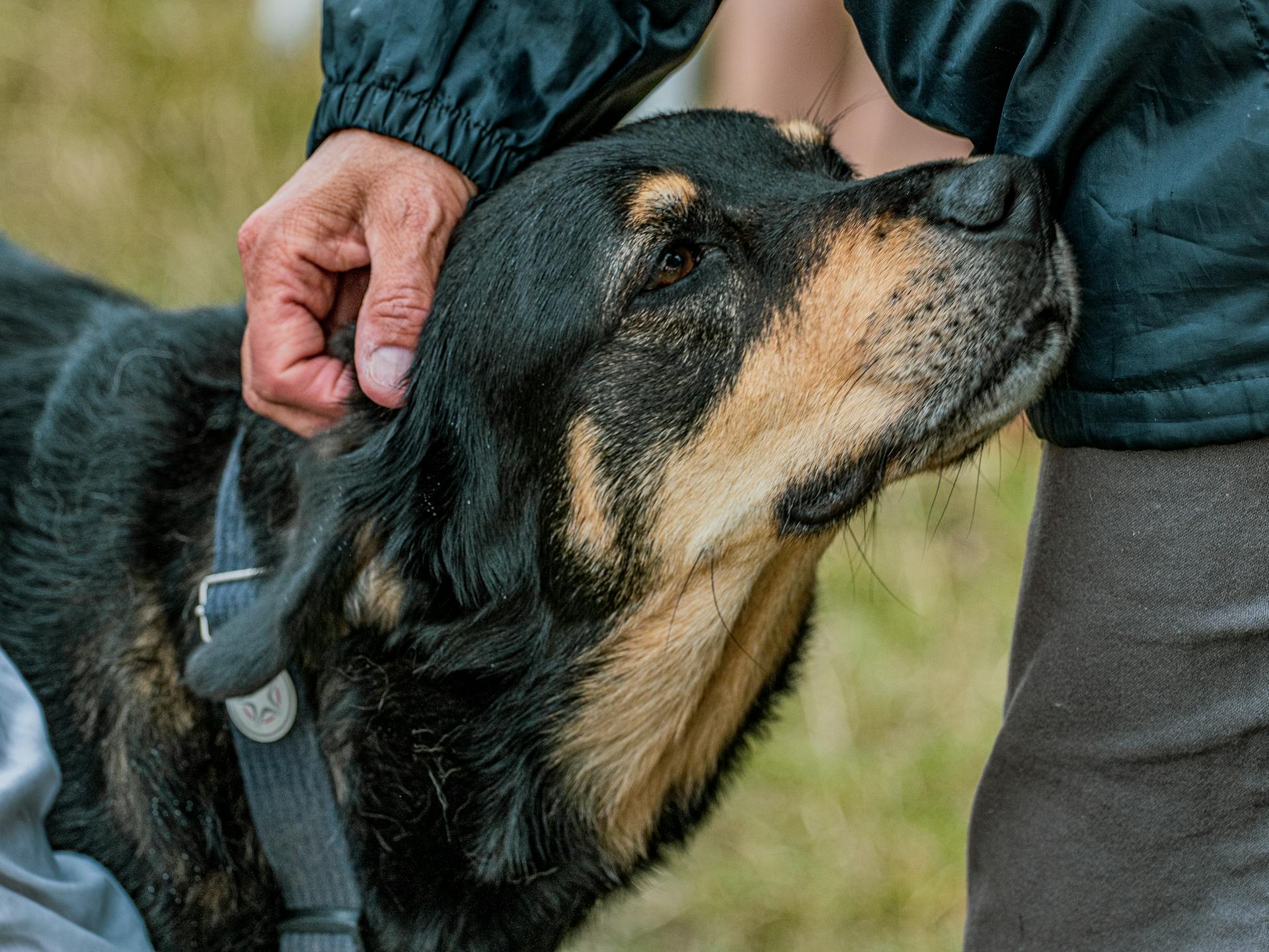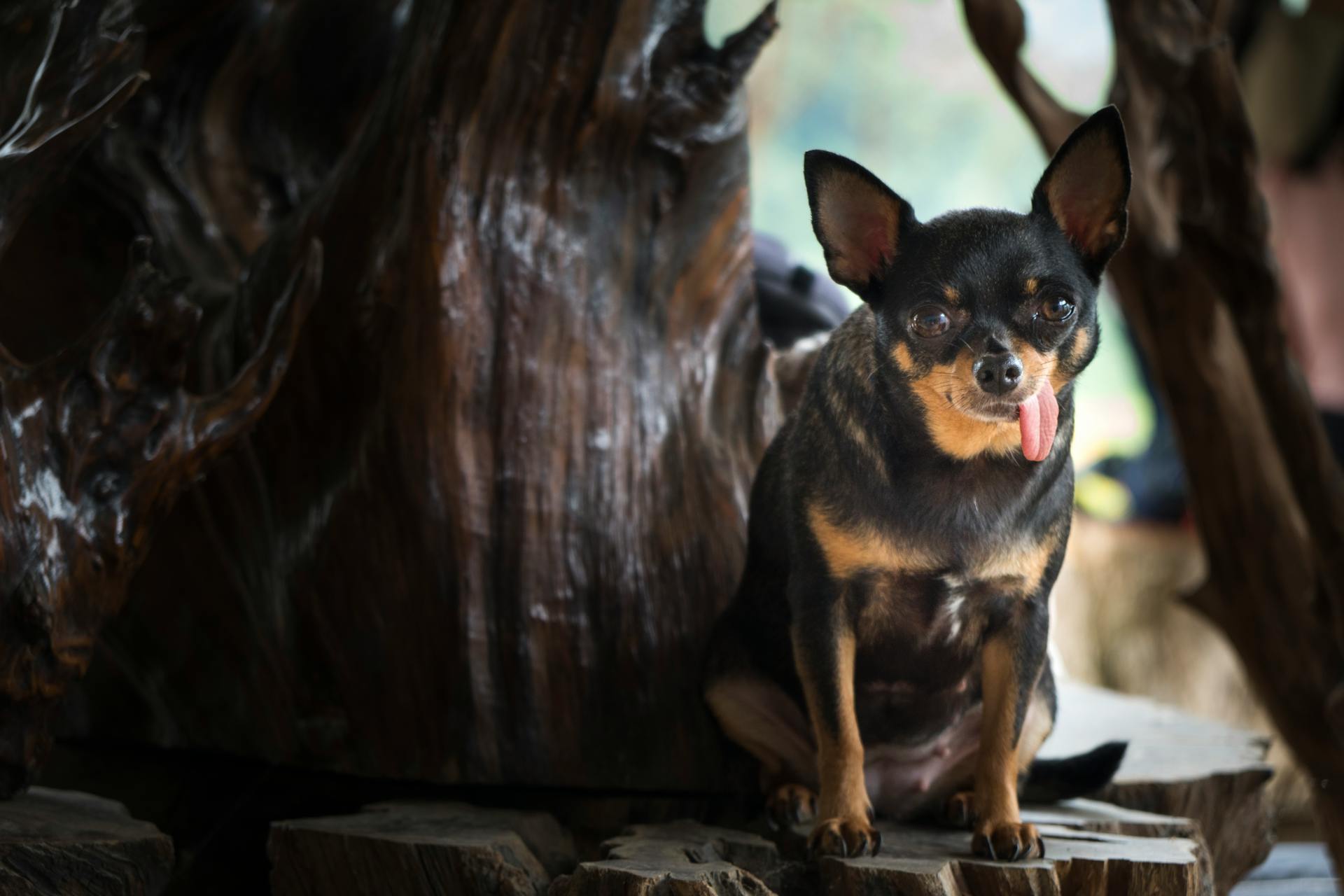
Labradors are built for cold weather, but there's a point where it becomes too chilly for them to be safe. Temperatures below 32°F (0°C) can cause hypothermia in Labradors, especially if they're wet or not acclimated to the cold.
Labradors can tolerate temperatures as low as 14°F (-10°C) for short periods, but prolonged exposure can be hazardous.
If your Labrador is shivering or showing signs of cold stress, it's time to head back inside.
Safety Precautions
Never leave your Labrador outside in freezing outdoor temperatures. Keep walks and potty breaks short to prevent hypothermia.
If you anticipate being outside for longer, bundle up your Labrador with a warm winter coat and dog booties to protect their paw pads from the cold snow and antifreeze. This is especially essential for short-haired Labradors in cold climates.
Wiping off your Labrador's paws with soap and water or dog wipes can also help prevent damage, especially if booties aren't their style.
Stay Safe This Winter
Dogs can suffer from frostbite if conditions are severe, so it's essential to protect their paws from the cold. If your dog will tolerate it, booties are a great way to do this.
Paws are one of the few areas of a dog's body that are not protected by fur, making them prone to the cold. Wiping off paws with soap and water or even dog wipes can help prevent damage if booties aren't your dog's style.
Never leave your dog out in freezing outdoor temperatures. Keep walks and potty breaks short to prevent hypothermia.
If you anticipate being outside for longer, bundle up and get your pooch a warm winter coat and dog booties to protect their paw pads from the cold snow and antifreeze.
Here are some signs your dog may be too cold:
- Shivering
- Hunched posture
- Lifting or holding their paws off the ground
- Lethargy
- Whining
- Stumbling or lack of coordination
- Dilated pupils
- Low heart and breathing rates
- Curling up
If you notice any of these signs, seek immediate treatment to prevent hypothermia.
Hypothermia Treatment
If your dog shows signs of hypothermia, get them to a warm environment as soon as possible.
Wrap your dog in a blanket to help trap the warmth.
Place warm water bottles around your dog to keep them warm, rather than using a heating pad that can burn their skin.
Factors Affecting Cold Tolerance
Labradors, like many other breeds, have varying levels of cold tolerance. Their thick double coat is one of the reasons they can handle cooler temperatures.
Age can also impact a Labrador's ability to regulate their body temperature in cold weather. Puppies and geriatric Labradors will have a harder time handling the cold, so it's essential to provide them with extra care and protection.
Health conditions like heart disease, kidney disease, and diabetes can also make Labradors more susceptible to the cold. If your Labrador has any underlying health issues, be sure to monitor them closely in cold weather.
Dogs that are used to the cold handle it much better than those that aren't. If your Labrador is accustomed to cooler temperatures, they'll likely be more comfortable in the cold than if they're not.
Here's an interesting read: Lyme Vaccination for Dogs Side Effects
Coat Type
Dogs with double-layered, thick coats like Siberian huskies and Newfoundlands are naturally cold-tolerant.
Their coats work like insulation, trapping warm air next to their skin and keeping the cold out.
Dogs with thin coats like Greyhounds and American pit bull terriers will have a harder time staying warm in cold weather.
Their short coats don't provide enough insulation, making it harder for them to maintain a warm body temperature.
Additional reading: Do Labradors Need Winter Coats
Age and Health
Dogs with underlying health problems may struggle to regulate their body temperatures as well as healthy dogs. Puppies have less body fat to act as insulation, making it harder for them to stay warm.
Senior dogs may not be able to increase their metabolic rate to generate extra heat as they used to. This can make them more susceptible to cold temperatures.
Puppies' relatively small size also works against their ability to stay warm. Be sure to keep their walks short and protect them from the cold with proper accessories like dog sweaters or coats.
If this caught your attention, see: Photos of Yellow Labrador Retrievers
Conditioning
Conditioning plays a big role in how well your dog can handle cold temperatures. Dogs that are used to the cold handle it much better than those that aren't.
Exercise and physical activity can help condition your dog to the cold. This is especially true if you gradually introduce them to cooler temperatures over time.
A good example is how some dogs can't wait to go for a walk in 55 F temperatures after a long winter, while others will shiver and hesitate.
How Is Too?
If it's too cold for you, it's likely too cold for your dog, so use that as a general guideline.
A dog's breed is a significant factor in cold tolerance, with thicker-coated breeds like Siberian huskies having a higher tolerance for low temperatures.
Puppies and senior dogs have a harder time regulating their body temperature, so dress them up in a sweater or coat and limit their exposure to extreme cold.
Wind chill and other weather conditions like rain or snow can make the outdoors even chillier for dogs.
If the temperature drops to below 30 degrees, it's best not to keep your dog outside for an extended period.
Readers also liked: Why Are Labradors so Friendly
Environmental Conditions
Labradors can tolerate temperatures above 45°F without becoming a problem, but it's essential to consider factors like their size, age, and coat.
Temperatures above 45°F are generally not a concern for most Labradors, but it's crucial to remember that individual factors can affect their comfort level.
If your Labrador is kept indoors, it's possible for them to get cold at night, even if they're in a warm environment.
Weather Dependent
Above 45°F is generally not a problem for most dogs, but remember the size, age, and coat matter.
A brisk breeze can cut through a dog's coat, greatly decreasing its ability to insulate and protect against the cold. This is especially true when the wind chill factor is high.
Rain, snow, heavy fog, or going for a swim can quickly chill a dog even if the air temperature is mild. Dampness can soak through the fur and lower a dog's body temperature rapidly.
The temperature alone isn't the only factor to consider - other weather conditions like wind chill and dampness play a significant role in determining how cold is too cold for dogs.
For another approach, see: Why Is My Dog's Mouth Cold?
Temperature Breakdown
Below 45°F, some cold-averse dogs might begin to feel uncomfortable.
If you have a smaller breed dog, dog with a short or thin coat, or a dog with health conditions, you should pay close attention to their well-being below 32°F.
Below 20°F, all owners need to be aware that their dogs could potentially develop hypothermia and frostbite, and never leave them outside in these conditions.
Dogs that are used to the cold handle it much better than those that aren’t used to cooler temperatures, so if your dog is accustomed to the cold, they might be more resilient to temperature changes.
Keep potty breaks short for your dog below 20°F to prevent them from getting too cold.
Do Get at Night
Dogs can get cold at night, even if they're indoors. It's not uncommon for dogs to seek out a warmer place if they're feeling chilly.
Most dogs will not feel cold at night, but if you suspect your dog is getting cold, consider giving them a cozy blanket to snuggle up with in bed.
Explore further: Dog Reverse Sneezing at Night
Sweaters
Labradors are built for the outdoors, but even they need a little extra help staying warm in the cold winter months. A cute dog sweater like the GF Pet Chalet Dog Sweater can help dogs with very thin coats stay warm when there's a slight chill in the air.
Dog sweaters and fleeces won't provide enough protection when weather conditions become more extreme, so it's essential to know when to switch to a more substantial coat.
Labradors with thin coats will appreciate the warmth of a dog sweater, but it's crucial to remember that these won't be enough for colder temperatures.
General Information
Cold weather can be a real challenge for Labradors and their owners.
Dogs can quickly become chilled, especially if they're wet or old.
Prolonged exposure to cold temperatures can lead to serious health issues, including hypothermia and frostbite.
Labradors, being a relatively thick-coated breed, can tolerate some cold, but it's essential to know when it's too cold for them.
Size
Smaller dogs and toy breeds have a harder time in the cold because they tend to lose body heat faster than larger dogs.
Deep snow can reach their chest and make them cold and wet, so they are more at risk in colder temperatures.
Weight

Body fat is a good insulator, which means thinner dogs tend to get colder faster in low temperatures. Thicker dogs generally stay warmer.
Making your dog overweight is not a solution to keep them warm in winter, as there are greater health risks associated with it.
General Information" would best fit the subheading "Do Get?
Dogs do get cold in winter, just like humans. They're susceptible to hypothermia and frostbite.
Cold weather can dry out a dog's skin, causing dry skin and dehydration. The dry air is just as hard on dogs as it is on their owners.
Make sure your dog has constant access to water to stay hydrated. If your dog's nose gets dry in the winter, consider a pet-friendly nose balm to keep it hydrated.
Intriguing read: Dry Skin on Labradors
Frequently Asked Questions
How do I keep my Labrador warm in the winter?
To keep your Labrador warm in winter, provide a warm spot and ensure they stay dry and clean, and consider using a heater or heat lamp. Additionally, dress them in a Doggie Jacket and maintain their overall health with regular feeding and paw care.
Do Labradors need jackets in winter?
Labradors are well-suited for winter climates due to their two-layer coat, so they typically don't need extra jackets. However, individual needs may vary depending on factors such as age, health, and living conditions.
Sources
- https://outwardhound.com/furtropolis/dogs/how-cold-is-too-cold-for-dogs
- https://www.dogsloverunning.com/how-cold-is-too-cold-to-walk-the-dog/
- https://www.petmd.com/dog/care/how-cold-too-cold-dog
- https://www.canadianpetconnection.ca/when-is-it-too-cold-to-walk-the-dog/
- https://www.dailypaws.com/dogs-puppies/dog-safety-tips/how-cold-is-too-cold-for-dogs
Featured Images: pexels.com


